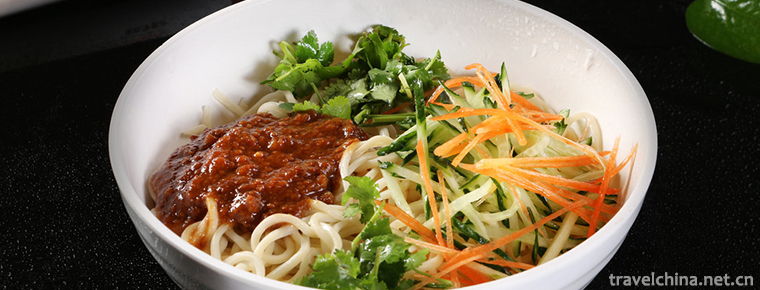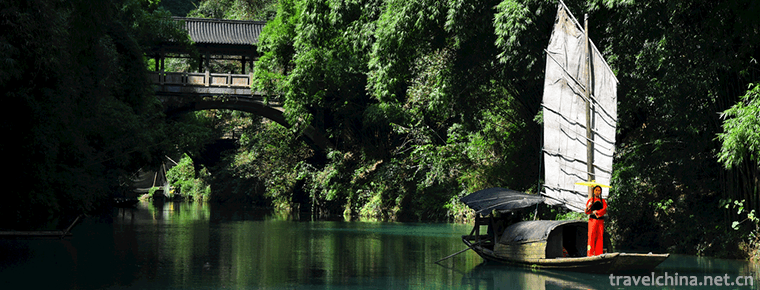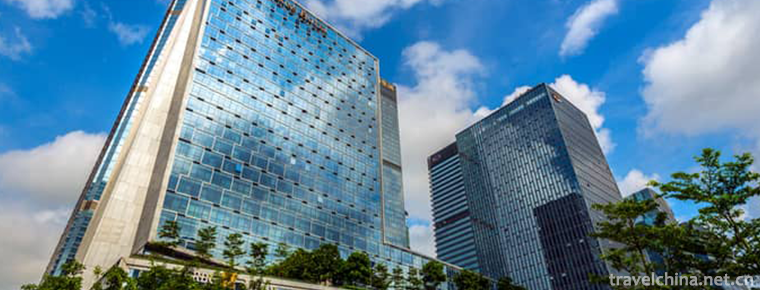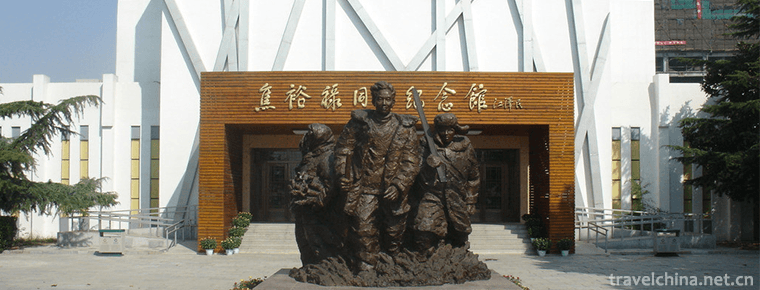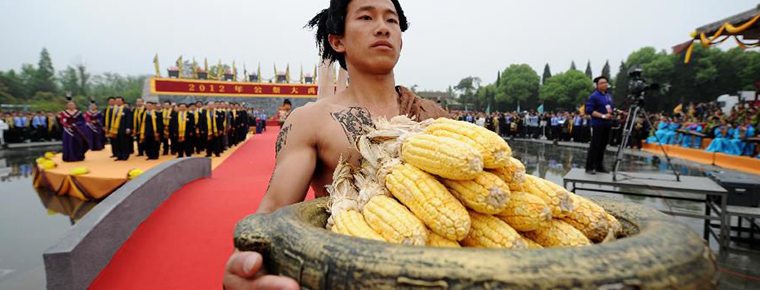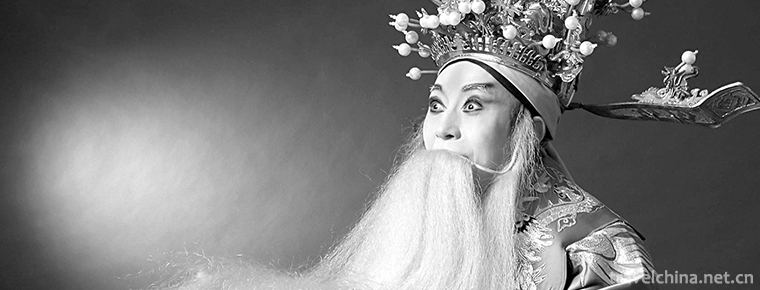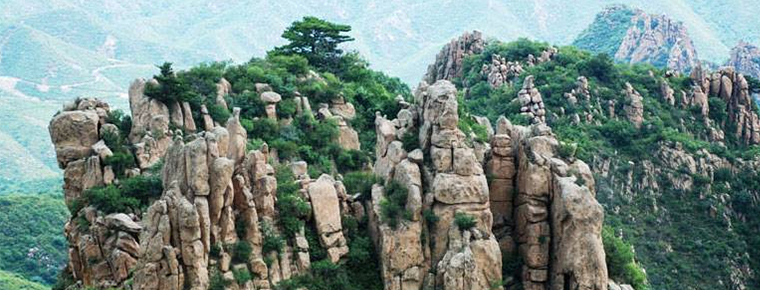Dayugou Scenic Area
Dayugou Scenic Area
Dayugou Scenic Area is located in Dayugou, Muer Township, Zhuoni County, Gannan Tibetan Autonomous Prefecture. It is 12 kilometers away from the county seat and has a total area of 105214.6 hectares. Dayugou, a tributary of Taohe River, runs 70 kilometers from north to south across the whole territory. It is the northern slope of the Dieshan Mountains, with flowing water rhyming and green Hills dripping green. Dayu Valley has nine branches, in turn, Yunjiang Gorge, Qibu Gorge, Sangbu Gorge, Ajiao Xiaogou, Ajiao Dagou, Oatmeal Valley, Zha Ya Tagou, Bashi Valley, Nietzsche Valley, etc. They are distributed in the southeast of Dayu Valley, like a giant fan left over from the world, with heavy ink on its face, depicting numerous strange mountains and waters. The main peak of Mount Dieshan in the scenic area, Zaikega, is 4920 meters above sea level (the highest peak of Qinling Mountains), with an elevation of 2500 meters above sea level and a relative elevation difference of 2400 meters. Therefore, the vertical distribution of organisms in the scenic area varies greatly. There is the saying that "a mountain has four seasons, ten miles and different days", which is colorful and contrastive.
The scenic area includes two townships of Radiated Muer and Nalang, including Xini Valley, Nalang Valley, Boyu Valley and Muer Valley, and the rich Juenai Tibetan folk culture on the South Bank of Taohe River.
The scenic spot is as famous as Jiuzhaigou and has the reputation of "Jiuzhaigou in the South and Dayugou in the north".
Overview of scenic spots
Dayugou Scenic Area is located in Dayugou, Muer Township, Zhuoni County, Gannan Tibetan Autonomous Prefecture. It is 30 kilometers away from the county seat and has a total area of 105214.6 hectares. Dayugou, a tributary of Taohe River, runs through the whole territory from north to south, among which the Dieshan Mountains extend with flowing water and green hills. Dayu Valley has nine branches, in turn, Yunjiang Gorge, Qibu Gorge, Sangbu Gorge, Ajiao Xiaogou, Ajiao Dagou, Oatmeal Valley, Zha Ya Tagou, Bashi Valley, Nietzsche Valley, etc. They are distributed in the southeast of Dayu Valley, like a giant fan left over from the world, with heavy ink on its face, depicting numerous strange mountains and waters. The main peak of Mount Dieshan in the scenic area, Zaikega, is 4920 meters above sea level, and the gully mouth is 2500 meters above sea level, with a relative height difference of 2400 meters. Therefore, the vertical distribution of organisms in the scenic area varies greatly. It is said that "one mountain has four seasons and ten miles have different days". The snow line of Mount Dieshan is above bare rock, followed by alpine meadow, virgin forest, low mountain meadow, shrub, farm and pasture, etc., with colorful and distinct contrast. Dayugou is divided into five sections according to the composition of mountain-shaped River system. From West to east, it is divided into five scenic spots: Qibugou, Bashili Gou, Niganima Gou, Ajiao Xiaogou and Sangbugou. There are more than 200 main scenic spots.
climate
The annual average temperature is 4.6 degrees Celsius, the hottest July average temperature is 14.8 degrees, and the coldest month average temperature is 7.6 degrees below zero. It is a typical "summer without heat, winter without severe cold" climate which conforms to the concept of tourism and leisure. The four seasons are distinct, the scenery is graceful, and the natural ecological landscape is gorgeous and colorful.
Introduction of scenic spots
Triangular stone
Triangle Stone Scenic Spot is located at the mouth of Triangle Stone Valley of Bugou Branch Valley in Dayugou Qibugou. As soon as it entered the ditch, a huge stone stood out in front of us. The three peaks with distinct edges and corners were triangular and standing on the top of the stone. They were magical and magnificent. It was said that the triangle stone was the arrow that King Gesar shot at the Guamelo tribe. Placed under the triangle stone, the surrounding pines are lush and the flowing springs are rippling. Looking up at Qishi is like a cock singing at its neck, so it is also called "cock dawn". When people walk around the stone in amazement and look back at the cock's dawn, it becomes another scene. A "sister peak" stands on the top of the green hills, with pines and cypresses on the top, and the stone colors are gorgeous. It makes people deeply feel the wonder of nature. The same landscape is appreciated in different places and has different postures.
Yun Jiang Gorge
Yunjiang Gorge is the first scenic spot in Dayugou scenic spot. The stone walls on both sides of the Gorge stand side by side. The Dayu River passes through the Gorge, twisting and twisting, and the sound of the water is rippling. In the middle of the gorge, the pines and cypresses are shaded by the sun. Outside the gorge, the pines and cypresses are lush and crisscrossed, making the gorge like the epitome of the Wuxia Gorge of the Yangtze River.
Flag cloth Temple
Qibu Temple, also known as Nadao Temple, is situated at the Qibugou Estuary of Muer Town on the South Bank of Taohe River. Qibu Temple was originally built on the platform of "Siyao" in Qibugou oat ditch. It is 1.5 kilometers away from the site. The ruins are obvious. There are still soil wall remnants and carbon layer in the site. Later, it moved to the site at the end of Ming Dynasty because of its change of religion. It has a history of about 800 years. As for the establishment of Qibu Temple, there is such a record in the History of Anduo's Religion and Administration: From 1618 to 1702, the temple was founded by Saikang Bassan, a prominent monk in Pengyu, Tibet, with the support of Yang Chaoliang, the ninth generation of Zonigabo (Tusi). Saikangbasan Jiejiatuo presided over the teaching of Qibu Temple and Zhuonida Temple in the fifteenth year of Kangxi reign (1676) of the Qing Dynasty and served concurrently as Fatai. In 1706, Awangsonan became the platform of Qibu Temple, forming the platform inheritance system of Qibu Temple. In the seventh year of Yongzheng in the Qing Dynasty (1729), Awangsonan presided over the construction of the Qibu Temple Sutra Hall. Then in the thirty-sixth year of Qianlong Emperor (1771), he built the Seniza Cang of the Qibu Temple, which was originally dedicated to the white ivory sculpture of the Immeasurable Life Buddha, the personally carved statue of King Baitanmufa in Gendun of the Second Dalai Lama, the statue of Nengyan Maitreya offered by King Qujichu, and Sakyamuni of the Dazhao Temple. The Golden Stiffness Mother and the Eight Pagodas of Goodness and Death decorated by the offerings in front of the Buddha statue belong to the Johnny Monastery, which appoints the Fatai to preside over the teaching of the Monastery. In 1958, Qibu Temple was caught in a fire, and none of the buildings survived except the Great Sutra Hall. The Qibu Temple is famous for its three-year, seven-day Manai. From the first day of May to the seventh day of the lunar calendar, villagers near Mu Er Town come to worship gods and mountain gods, and accept the roof of the Infinite Life Buddha. There are 22 monks and one living Buddha in the temple. The Xiangqu Manla living Buddha presided over the temple affairs. The Awangsonan Fatai was handed down to the sixth generation.
Chiblinka Resort
Qibrinka Resort is located on the shore of Zhuomalatso Lake. It mainly consists of Tibetan tents and cabins. It has three Tibetan cabins and tent cities with Zhuoni's unique folk style. It is a large-scale tourism resort with complete hydroelectric facilities, including leisure, entertainment and accommodation.
Goddess pool
Shunqi Buxia descended about 500 meters to the goddess pool. Legend has it that this pool was the place where fairies bathed. One year, fairies floated down, but the water of the goddess pool was knee-deep. The grass and trees on both sides of the pool were dry and discolored. Faced with such a situation, they had to return to the palace sadly. Soon, it was rainy, and the mountains and rivers were shining again. From then on, when the drought on the grassland was serious, local Tibetan women gathered near the pool, burning incense and simmering mulberries, singing folk songs, praying for fairies to spread clouds and rain, so as to keep the water plants flourishing and the cattle and sheep strong.
A Jiao gou
It is adjacent to Sangbu ditch and divided into Ajiao ditch and Ajiao ditch. "Eighteen crossings" is extremely dangerous, forming the Ajiaogou Grand Canyon. The most peculiar scenery should be three stone gates, one dangerous, one strange. The River rushes out of the canyon and converges into the Taohe River and the Yellow River.
Sangbugou and Sangbu Grassland
Entering Sangbu Valley, we can see the vast grassland and rolling hills. The rich grassland has become a natural pasture for cattle, sheep and livestock to breed and grow. Ajiao ditch is adjacent to Sangbu ditch, which is divided into big Ajiao ditch and small Ajiao ditch. "Eighteen crossings" is extremely dangerous, forming the Ajiaogou Grand Canyon. The most peculiar scenery should be three stone gates, one dangerous, one strange. The River rushes out of the canyon and converges into the Taohe River and the Yellow River.
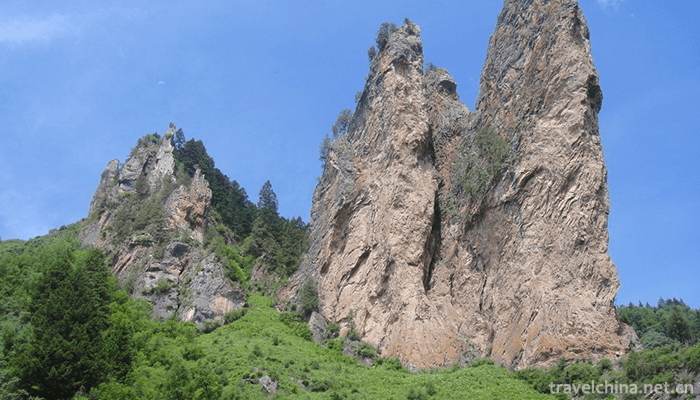
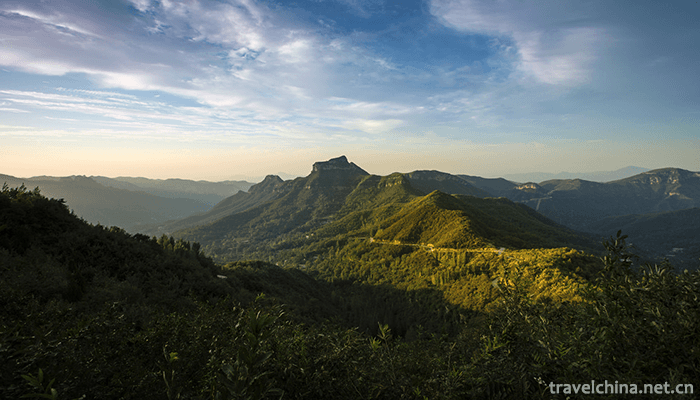

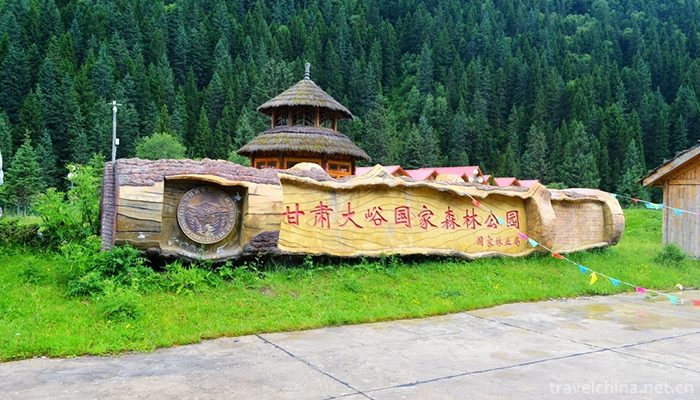


Dayugou Scenic Area
-
Noodles with Soy Bean PasteBeijing Style
Old Beijing fried noodles, a traditional Chinese pasta, made from dishes, fried sauce mixed noodles, popular in Beijing, Hebei, Tianjin and other places.
Views: 249 Time 2018-10-27 -
Heilongjiang Science and Technology Museum
Heilongjiang Science and Technology Museum is located in Sun Island Science and Technology Park of Harbin City, which is a ship-shaped building sailing
Views: 308 Time 2018-12-08 -
Three Gorges Household Scenic Area
Three Gorges Household Scenic Area, National AAAAA Class Tourist Area, the First Batch of Civilized Scenic Area in Hubei Province, Top Ten Scenic Spots in Hubei Province
Views: 164 Time 2018-12-12 -
Four Seasons Hotel Shenzhen
Four Seasons Hotel is an international luxury hotel management group, headquartered in Toronto, Canada. It was founded by Mr. Isado Sharp in 1961. Now it has more than 90 hotels and resorts in nearly
Views: 401 Time 2018-12-16 -
Jiao Yulu Memorial Park
Jiao Yulu Memorial Park (formerly Jiao Yulu Martyrs Cemetery) was built in February 1966. It is located on the old embankment of the Yellow River in the north of Lankao County, Kaifeng City
Views: 177 Time 2019-01-22 -
Da Yu memorial ceremony
The Dayu Festival is an ancient Chinese traditional folk sacrificial activity. Dayuling is located in Huiji Mountain, southeast of Shaoxing City, Zhejiang Province. Dayu Mausoleum is the burial place
Views: 119 Time 2019-04-23 -
Jiaodong drum
Jiaodong Drum is a folk folk folk art form which originated in the coastal counties of Jiaodong Peninsula. It has a history of more than 260 years so far. It originated from the blind
Views: 339 Time 2019-05-06 -
Qin opera
Qin Opera, also known as Bangzi Opera, is a traditional drama in Northwest China and one of the national intangible cultural heritage.
Views: 255 Time 2019-06-10 -
She Nationality Medicine
She medicine is mainly distributed in Jingning She Autonomous County of Zhejiang Province and in some mountainous areas of Fujian and Jiangxi provinces. She nationality has no written language and is
Views: 139 Time 2019-06-14 -
Daheishan Forest Park
Daheishan Forest Park is located in Wuben Township, Renhe District, Panzhihua City, Sichuan Province. From the center of Panzhihua bingcaogang River Panshan 58 kilometers, through Guaziping, Lanjian mine and Wuben township.
Views: 88 Time 2020-10-15 -
Thousand Buddha Cliffside Sculptures
Qianfo cliff, located 4 kilometers north of Guangyuan City, on the East Bank of Jialing River and on the ancient Shu Road of Jinniu, has a long history and exquisite carving skills. The grottoes began in the late Northern Wei Dynasty, flourished in the Tang Dynasty and ended in the Qing Dynasty. After thousands of years
Views: 362 Time 2020-11-08 -
Jianmen Shu Road
Jianmen Shudao is one of the first batch of national scenic spots, with jianmengguan as the core, starting from Ningqiang, Shaanxi in the north and Chengdu in the south, with a total length of 450 km. The culture of the three kingdoms along Jianmen Shu Road is profound. Pang Tong, Jiang Wan, Jiang Wei, Deng AI,
Views: 239 Time 2020-11-08
